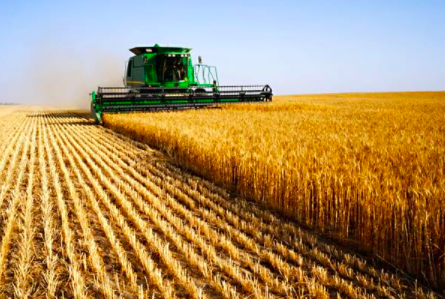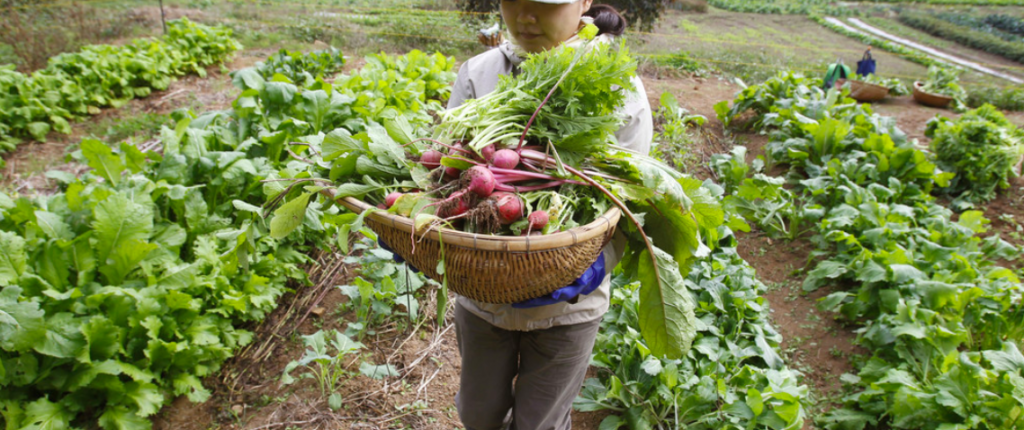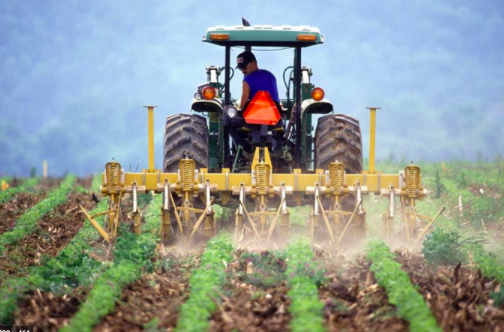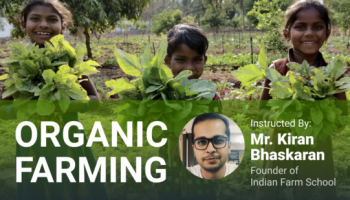Some of the oldest and most important occupations in the world are agriculture and farming. Our ancestors have discovered since the beginning of civilization that agriculture, in its earlier form back then was their main source of food. Since then, thanks to different innovations, agriculture has come a long way in the methods that we use to do modern farming and grow crops.
Yet, mankind seems to be moving towards very daunting food issues. The resources available to us in this world are limited, and seeing how extensively we exploit them as humans, they are fast depleting. The human race cannot be stopped from evolving, hence what needs to be done is to start using a more sustainable solution. First of all, there are many environmental issues that we are actually grappling with.
First of all, we are currently dealing with several environmental issues that make experts think soil fertility is decreasing rapidly. And this will, undoubtedly have a huge effect on the production of food. Second, it is believed that the global population would hit nearly 10 billion by 2050. And analysts say, as our current agricultural system stands, that we will not be able to grow enough food to feed all. To meet the population growth demands, global food production must increase by 70% by 2050. This might seem surprising and scary to many. So, what is the solution? Modern farming!
Modern farming is an emerging approach to agricultural innovation and farming practices that helps farmers increase productivity and reduce the number of natural resources required to meet the world’s needs for food, fuel, and fiber, such as water, land ad electricity.
Now we know that modern farming has improved our food affordability, increased the viability of food, ensured food safety, improved sustainability, and has created more biofuels as well. But at the same time, since it is based on high input-high output technique using hybrid seeds of high yielding variety and ample irrigation water, fertilizers, and pesticides, it also contributes to some environmental issues that also affect the climate, such as soil erosion, contamination of groundwater, waterlogging and salinity, and some times eutrophication. But these effects can be reduced as well.

Now we’ll see the different types of Modern farming that are present.
TYPES OF MODERN FARMING
- AGRIBUSINESS: Agribusiness is the agricultural production sector that includes the production, safety, selling, and promotion of the commodity to meet the needs of the customers. The word is a farming and business portmanteau and was invented by John Davis and Ray Goldberg in 1957. This includes modern farming, breeding, crop production (farming or contract farming), distribution, agricultural equipment, manufacturing and supply of seeds, as well as marketing and retail sales.
- The agribusiness system involves all agents of the food and fiber value chain and those organizations that control it. The term ‘agribusiness’ applies to the variety of activities and disciplines covered by modern food production within the agricultural industry. There are academic degrees specialized in agribusiness, agribusiness agencies, trade associations for agribusiness, and journals for agribusiness. Agribusiness is a sector that encourages the development of the agricultural sector, which is central to the growth of the economy.
- It continues to play a crucial role in developed countries’ development, too. Agricultural production can theoretically be increased by agribusiness, which is why governments also give subsidies to agricultural enterprises. Agricultural practices also lead to improving the food security system and the sustainable development of food, as well as the income of the majority of the poor in developing countries. The operations, however, increase greenhouse gas emissions and lead to global warming, which is why innovation is critical for the sector to tackle these problems.
- Innovation among agribusinesses is a continuing pursuit, as the industry seeks improved and efficient production and processing methods. Many businesses, for instance, now provide drone surveillance of farms, which gives farmers/owners insights into crop health and allows them to generate stock forecasts and prepare for the future.
- Furthermore, new and improved forms of machinery, such as robotic harvesters, automated pesticide sprayers, and driverless tractors, are being engineered and produced on a large scale. Ultimately, the purpose of agribusiness innovation is to increase agricultural productivity and promote farmers’ agricultural activities.
- The goal is to reduce production costs and improve profitability for farmers, who often suffer unpredictable market conditions as crop prices fluctuate as economic conditions shift.

- INTENSIVE FARMING: Intensive farming, also known as intensive farming (as opposed to extensive farming) and industrial farming, is a form of modern farming involving both crops and animals, with higher input and output levels per cubic unit of agricultural land. A low fallow ratio, higher use of inputs such as capital and labor, and higher crop yields per unit of land area are characterized.
- In one or more respects, most commercial agriculture is intensive. Often referred to as industrial agriculture, forms that rely heavily on industrial methods are characterized by inventions designed to increase yield. Techniques include the planting of several crops each year the reduction of fallow-year frequency and the improvement of cultivars.
- Increased use of fertilizers, plant growth regulators, and pesticides, and mechanized modern farming are also included, regulated by enhanced and more comprehensive growing conditions research, including weather, soil, water, weeds, and pests. Intensive farms are common and rapidly prevalent globally in developing nations.
- These farms produce much of the beef, dairy products, eggs, fruits, and vegetables available in supermarkets. Sustainable methods can be used by some intensive farms, although this may involve higher labor inputs or lower yields. Sustainably increasing the productivity of modern farming, especially among smallholder farms, is an important way to reduce the amount of land required for agriculture and slow environmental degradation via processes such as deforestation.
- Since modern farming has such intense impacts on climate change, hence using sustainable methods to practice intensive farming will help mitigate the changes. Significant numbers of animals raised on small land are engaged in intensive animal farming, for example by rotational grazing, or even in the Western world as concentrated animal feeding operations.
- Compared to intensive animal husbandry, these techniques maximize the yields of food and fiber per acre; the concentrated feed is brought to seldom-moved livestock, or the animals are repeatedly moved to fresh forage with rotational grazing.
- ORGANIC FARMING: Organic farming is an agricultural method that developed in response to rapidly evolving farming practices early in the 20th century. Globally certified organic farming accounts for 70 million hectares. Today, organic farming continues to be grown by different organizations. The use of organic fertilizers such as compost manure, green manure, and bone meal is established, and emphasis is put on techniques such as crop rotation and companion planting.
- Biological management of pests, mixed production, and the promotion of insect predators are encouraged. Organic requirements are intended to encourage the use of substances that exist naturally while banning or strictly restricting synthetic substances.
- Naturally occurring pesticides such as pyrethrin and rotenone, for example, are required, while synthetic fertilizers and pesticides are typically prohibited. For example, copper sulfate, elemental sulfur, and Ivermectin are synthetic substances that are permitted. It is forbidden to use genetically modified organisms, nanomaterials, human waste sludge, plant growth regulators, hormones, and antibiotics in livestock husbandry.
- Organic farming proponents assert sustainability benefits, transparency, self-sufficiency, autonomy/independence, health, food safety, and food safety. The methods of organic farming are legally enforced and regulated internationally by various nations. To put it in simpler words, organic farming is an integrated agricultural system aimed at sustainability, improving soil fertility and biological diversity while banning synthetic pesticides, antibiotics, synthetic fertilizers, genetically modified organisms, and growth hormones, with occasional exceptions. In India, organic farming is in a nascent stage.
- According to the Union Ministry of Agriculture and Farmers’ Welfare, about 2.78 million hectares of agricultural land had been cultivated organically as of March 2020. This is two percent of the country’s net sown area of 140.1 million ha. A few states have taken the lead in expanding the coverage of organic farming, as much of this region is concentrated in just a handful of states.
- Madhya Pradesh tops the list with an area under organic cultivation of 0.76 million ha, which is over 27 percent of the total organic cultivation area of India. Madhya Pradesh, Rajasthan, and Maharashtra, the top three states, account for about half the organic cultivation area. Around 80% of the total area under organic cultivation is accounted for by the top 10 states.
- PRECISION AGRICULTURE: Precision farming (PA), satellite farming, or site-specific crop management (SSCM) is a principle of agricultural management focused on the observation, calculation, and response of crop inter-and intra-field variability. The aim of precision agriculture research is to establish a framework of decision support (DSS) for entire farm management with the objective of maximizing input returns while maintaining resources.
- Among these many approaches is a Phyto geomorphological approach that links stability/characteristics of multi-year crop growth to topological terrain attributes. The interest in the Phyto geomorphological approach stems from the fact that the hydrology of the farm field is usually determined by the geomorphology part. The advent of GPS and GNSS has enabled the practice of precision agriculture. The ability of the farmer and/or researcher to locate their precise location in a field allows the development of spatial variability maps of as many variables as can be calculated (e.g. crop yield, landscape features/topography, organic matter content, moisture levels, nitrogen levels, pH, EC, Mg, K, and others).
- Similar data are obtained by sensor arrays installed on a GPS-equipped combined harvest. These arrays consist of real-time sensors that monitor everything from chlorophyll levels to plant water status, along with multispectral imagery. This data is used to optimally disperse resources in accordance with variable rate technology (VRT) satellite imagery, including seeders, sprayers, etc.
- Recent technological advancements, however, have allowed real-time sensors to be used directly in the soil, which can transmit data wirelessly without the need for human presence. These topographic maps can be used to associate crop health with topography, the effects of which can be used by variable rate applications to optimize crop inputs such as water, fertilizer, or chemicals such as herbicides and growth regulators.

- SUSTAINABLE FARMING: Sustainable agriculture is sustainable farming, which means meeting the existing food and textile needs of society without sacrificing the capacity of present or future generations to fulfill their needs. It can be based on an understanding of ecosystem services. To improve the sustainability of agriculture, there are several methods.
- It is important to establish flexible business processes and agricultural practices while developing agriculture in the sense of sustainable food systems. Agriculture has an immense environmental footprint, playing a major role in causing climate change, water shortages, land destruction, deforestation, and other processes; it is simultaneously causing environmental changes and being affected by these changes.
- Creating sustainable food systems contributes to the survival of the human population. For instance, the development of sustainable food systems based on sustainable agriculture is one of the best ways of mitigating climate change. Sustainable agriculture offers a possible solution to allow agricultural systems, under changing environmental conditions, to feed a rising population.
These are the benefits of starting Modern farming since you’re helping the environment get better and the human race sustains for a longer time. And the right time to start is now!
You can read about our other blogs HERE!


